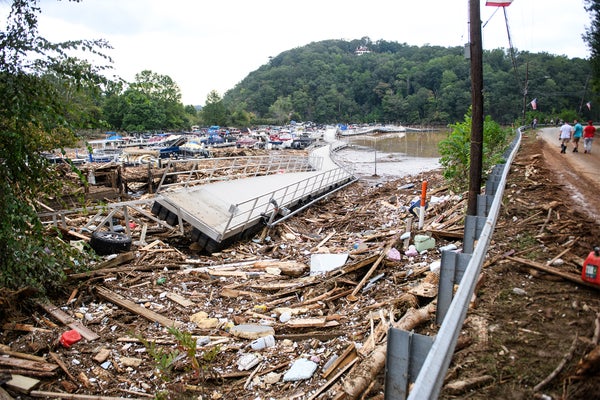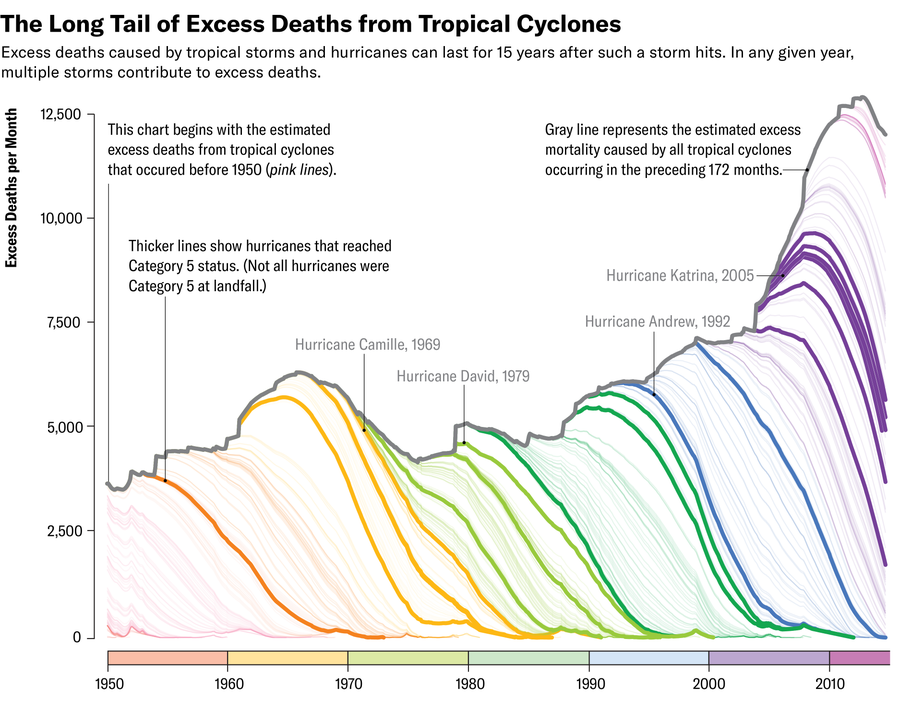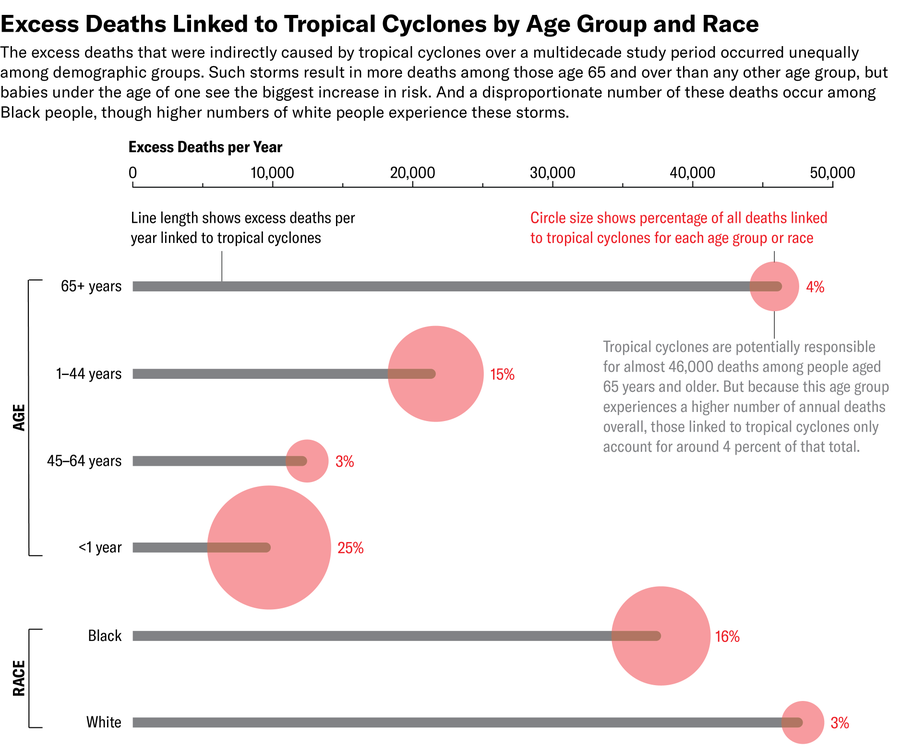
October 2, 2024
4 min read
Hurricanes Kill People for Years after the Initial Disaster
The average tropical cyclone in the U.S. ultimately causes about 7,000 to 11,000 excess deaths, new research finds

The Rocky Broad River flows into Lake Lure and overflows the town with debris from Chimney Rock, N.C., after heavy rains from Hurricane Helene on September 28, 2024. Approximately six feet of debris piled on the bridge from Lake Lure to Chimney Rock, blocking access.
Melissa Sue Gerrits/Getty Images
More than 160 people have lost their lives to the ferocious winds and catastrophic flooding wrought by Hurricane Helene. But the true death toll will take years—likely more than a decade—to unfold.
A new study published on Wednesday in Nature found that the average tropical cyclone in the U.S. ultimately causes about 7,000 to 11,000 excess deaths (those beyond what would typically be expected), compared with the average of 24 direct deaths reported in official statistics. The study’s authors estimated that, between 1950 and 2015, tropical storms and hurricanes caused between 3.6 million and 5.2 million excess deaths—more than those caused by traffic deaths or infectious diseases. And such storm-related deaths involve people from some groups more than others, marking an “important and understudied contributor to health in the United States, particularly for young or Black populations,” the authors wrote.
“These are individuals who are dying years before they would have otherwise,” says study co-author Rachel Young, an environmental economist at the University of California, Berkeley.
On supporting science journalism
If you’re enjoying this article, consider supporting our award-winning journalism by subscribing. By purchasing a subscription you are helping to ensure the future of impactful stories about the discoveries and ideas shaping our world today.
This study is part of a burgeoning trend: assessing the full health consequences of the growing number of disasters fueled by climate change. Epidemiologists and other experts have increasingly been emphasizing that heat wave deaths are significantly underestimated, and recent research has found that wildfire smoke kills thousands of people in California—many more than the actual flames. “We thought that there was something similar with hurricanes,” Young says.
So she and Stanford University economist Solomon Hsiang looked at hurricanes that hit the U.S. from 1930 to 2015, as well as mortality data and used statistical methods to compare a state’s deaths before a storm with those that occurred over the course of 20 years after from 1950 to 2015. “We thought we’d see maybe six months or a year of a delayed effect,” Young says, but data showed excess deaths occurring for 15 years after a storm. “We were so stunned,” she says, that the researchers spent years testing and retesting to make sure the effect was real.

Zane Wolf; Source: “Mortality Caused by Tropical Cyclones in the United States,” by Rachel Young and Solomon Hsiang, in Nature. Published online October 2, 2024
Thinking beyond the data, the duration of the effect makes sense because “these are huge events,” Young says. “Look at what’s going on with Helene.” Families may have to spend months in damaged or mold-riddled homes before repairs are made. People may have to use their savings for repairs, leaving less money for their health care for years. People may be forced to move and live farther away from crucial social support networks. And these events exert a considerable mental health burden. “It’s devastating to the individuals, and it’s devastating to the local and state governments, too,” Young says, noting that other research shows these governments experience budget declines for many years after a hurricane. For those affected, she adds, “you’re in a version of the world where you have less money, you have less resources, you have more pollution exposure”—a bad combination when it comes to staying healthy.
When breaking out the data by age groups, the study found that people aged 65 and older had the largest number of storm-related excess deaths. But when the higher general probability of death in this age range was factored in, this group’s storm death risk was smaller than that of others. The biggest risk was found to be for infants under the age of one, with almost all of these deaths occurring within less than two years after a storm. Young says that this effect could be influenced by people’s inability to afford prenatal care in a storm’s wake, as well as stress or other factors.
The risk of death was also higher among Black people than it was among white people, even though the white population that was exposed to storms was much larger than the exposed Black population.

Zane Wolf; Source:“Mortality Caused by Tropical Cyclones in the United States,” by Rachel Young and Solomon Hsiang, in Nature. Published online October 2, 2024 (data and reference figure)
The analysis further showed that “the mortality response isn’t going down over time,” Young says, meaning storms today have the same long-tail mortality impact as they did decades ago. Young and Hsiang don’t know exactly why this is the case and say it will take more research to dig into the reasons.
That mortality finding particularly struck Eugenio Paglino, a postdoctoral researcher at the Helsinki Institute of Demography and Population Health, who was not involved with the new study. He says that on first reading the paper’s abstract, he thought the numbers of excess deaths the authors found “seemed pretty large,” but he felt they did a thorough job of checking the robustness of the results. He would like to see additional research examine what might actually be causing these excess deaths and further bolster the findings.
Young and Hsiang also want to see this kind of follow-up research—and hope to do some themselves. It’s a necessary step toward the ultimate goal of informing policymakers of what is needed to safeguard communities in the face of the growing climate disaster. As Helene shows, “local and state governments and first responders are doing heroic work to help people after disasters,” Young says. “We don’t want their efforts to be in vain.”
Source link




